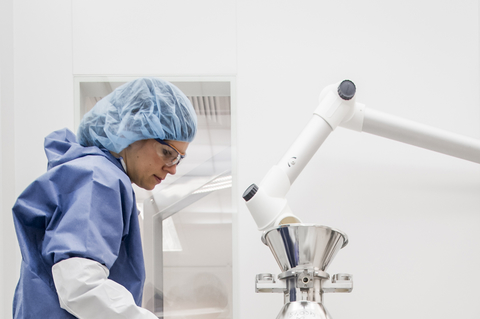
AstraZeneca is the latest player to unveil early COVID-19 vaccine data, and results seem to show an efficacy gap between at least one of its vaccine regimens and those of its two mRNA-based peers. But while investors may be less than enthused with the data, the vaccine does sport a major advantage in logistics given its much warmer storage needs.
AstraZeneca’s COVID-19 vaccine candidate, dubbed AZD1222, can be stored and transported at normal refrigerated temps of 2 degrees to 8 degrees Celsius (36 degrees to 46 degrees Fahrenheit) for at least six months and can be administered in “existing healthcare settings,” giving the shot a major logistics leg up over a leading mRNA-based competitor that requires ultra-cold storage.
The ability to effectively distribute AstraZeneca’s vaccine around the world could make a big difference in how the future market for COVID-19 shots shakes out.
By contrast, Pfizer and BioNTech—who filed for the FDA’s emergency use authorization last week—are hoping to churn out 1.3 billion doses in 2021 of their far more difficult to produce mRNA shot, dubbed BNT162b2. Smaller mRNA competitors such as CureVac are scraping together enough capacity to hit 300 million doses by 2021.
[huge_it_slider id=”15″]AstraZeneca, for its part, forecasts it can manufacture enough bulk inventory for roughly 200 million doses within the year, Reuters reported. By the end of Q1 2021, the drugmaker expects it can have enough material for 700 million doses.
Holding the advantage in logistics and inventory could help overcome early clinical data that has split analysts.
In a Monday note to clients, SVB Leerink analyst Geoffrey Porges cast doubt on whether AstraZeneca’s shot would ever see U.S. patients’ arms given concerns over its trial design—including not meeting the FDA’s standard on minority enrollment—and a still-unclear safety profile, including the rate of severe infections in inoculated patients.
In early September, AstraZeneca slammed the brakes on a U.K. phase 3 study of the vaccine after a patient developed an inflammatory side effect. The company later restarted the trial weeks later after determining the vaccine wasn’t the cause of the side effect.
That halt may not do much to assuage regulators’ worries, Porges wrote. But locking up the U.S. market may not be AstraZeneca’s end goal, and that’s where its logistics advantage would come into play.
“The companies (AstraZeneca and partner Vaccitech) are clearly already positioning the product as suitable for use in less developed countries, where their relatively favorable storage conditions…may be advantageous,” Porges wrote.
Both Pfizer and Moderna, with vaccines that target the same spike protein on the SARS-CoV-2 virus as AstraZeneca’s shot does, are steaming ahead toward emergency approvals with interim data readouts that showed strong efficacy.
After filing for approval late last week, Pfizer CEO Albert Bourla forecast the vaccine could be ready to ship just days after the FDA’s green light—a process that could take weeks. But distribution will be a concern: BNT162b2 must be kept at -70 degrees Celsius (-94 degrees Fahrenheit) and will last for only 24 hours at refrigerated temps between 2 degrees and 8 degrees Celsius (36 degrees to 46 degrees Fahrenheit).
Pfizer is toying with the possibility of pursuing a freeze-dried formulation of the vaccine to ease those stringent demands, but that’s a solution for the far future. The drugmaker is hoping to churn out 100 million doses of BNT162b2 within the year, and U.S. regulators are reportedly expecting to get the shot to patients by mid-December.
Moderna, meanwhile, has said its vaccine can also be stored at 2 degrees to 8 degrees Celsius (36 degrees to 46 degrees Fahrenheit) and is shelf-stable at room temps for 12 hours. Given it’s an mRNA-based vaccine—and those are typically far less stable to store and transport—that would represent a major advance in logistics for the field.
We use cookies to improve your experience on our site. By using our site, you consent to cookies.
Manage your cookie preferences below:
Essential cookies enable basic functions and are necessary for the proper function of the website.
These cookies are needed for adding comments on this website.
Statistics cookies collect information anonymously. This information helps us understand how visitors use our website.
Google Analytics is a powerful tool that tracks and analyzes website traffic for informed marketing decisions.
Service URL: policies.google.com (opens in a new window)
Marketing cookies are used to follow visitors to websites. The intention is to show ads that are relevant and engaging to the individual user.
You can find more information in our Cookie Policy and Privacy Policy.